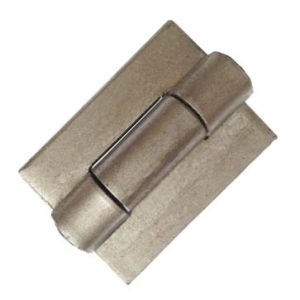
Hinges are commonly used to create an angle of rotation between two objects. Most of them consist of two leafs and a knuckle. The knuckle is the hollow center. The two leafs are placed together, after which a pin is inserted through the knuckle to hold them together.
You can find hinges on doors, gates, cabinets, machinery and more. With a hinge attached, you can pull these objects open. While some hinges are installed with fasteners, though, others require welding. Known as weld-on hinges, they offer both advantages and disadvantages.
Pro: Preserves Objects
Weld-on hinges preserve the structural integrity of the objects with which they are used. You won’t have to drill pilot holes into objects.
Traditional hinges, of course, are installed with threaded fasteners. You can drive a set of threaded fasteners through a traditional hinge and into the underlying object. Weld-on hinges live up to their namesake by requiring welding. You can weld them onto objects, thus protecting the objects from drilling-related damage.
Pro: Freedom of Placement
You’ll have more freedom when placing weld-on hinges than traditional hinges. You can install them just about anywhere. Assuming an object is metal — and it supports welding — you can use a weld-on hinge to create an angle of rotation for it. Just place the weld-on hinge in the desired area of the object, after which you can weld it.
Traditional hinges may offer less freedom of placement. If an object already has several pilot holes drilled into it, you may be restricted to installing a traditional hinge in those areas.
Con: Involve Heat
Weld-on hinges involve the use of heat. Welding is a fabrication process that’s characterized by the use of heat to join two or more objects. Unlike brazing or soldering, it specifically involves the fusion of these objects with heat. When the objects are exposed to heat, they’ll melt together.
Weld-on hinges require heat during the installation process. You’ll need to use a welding torch to melt the weld-on hinge and the object. As their respective surfaces melt, they’ll fuse together.
Con: Doesn’t Support Wooden Objects
Another potential disadvantage of weld-on hinges is the lack of support for wooden objects. As previously mentioned, welding is a fabrication process in which two or more objects are fused together with heat. You can’t weld hinges onto wooden objects.
For wooden objects, you should stick with traditional hinges. Traditional hinges with through holes for threaded fasteners work with most types of objects, including wooden objects.
